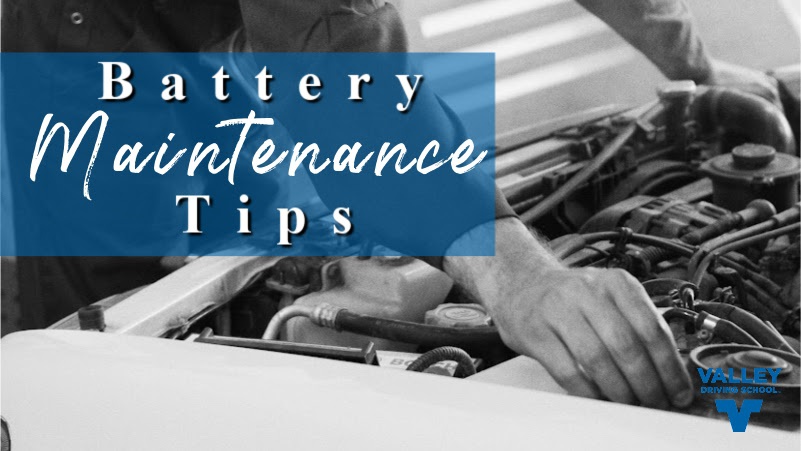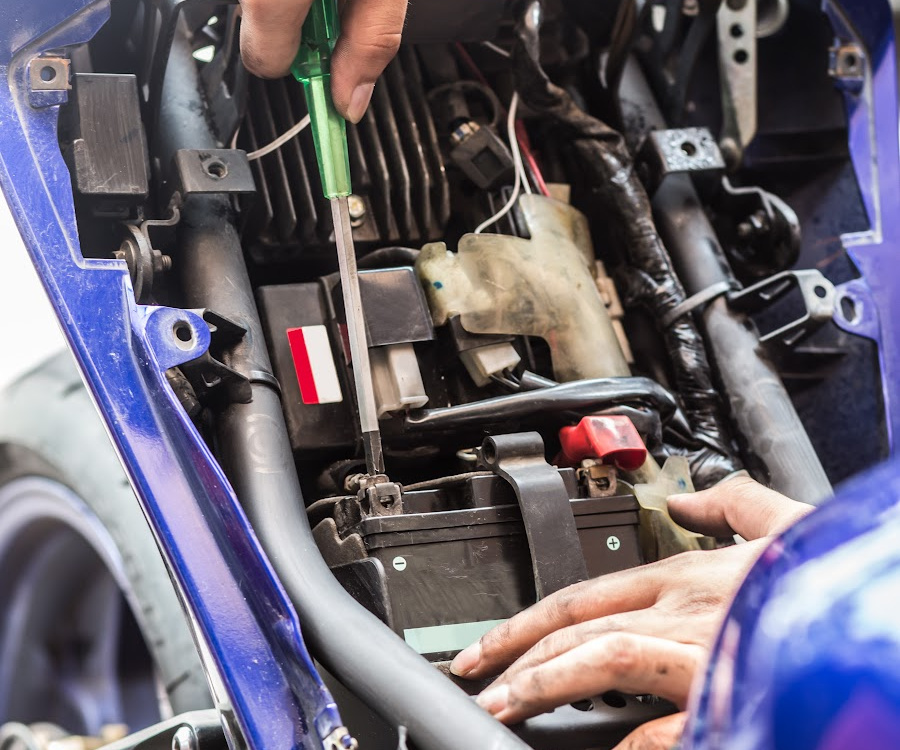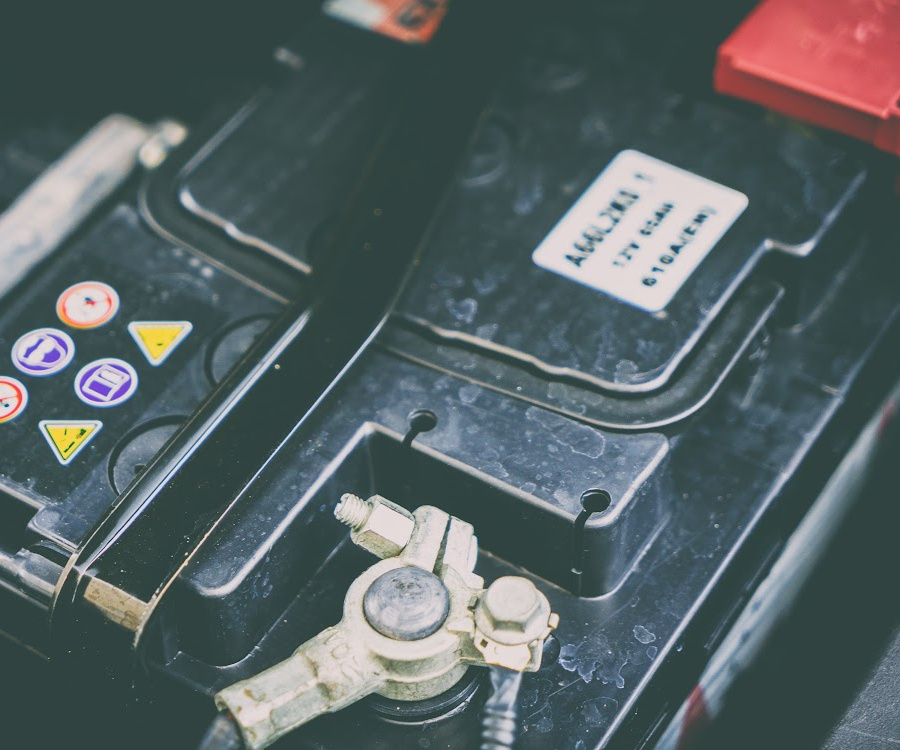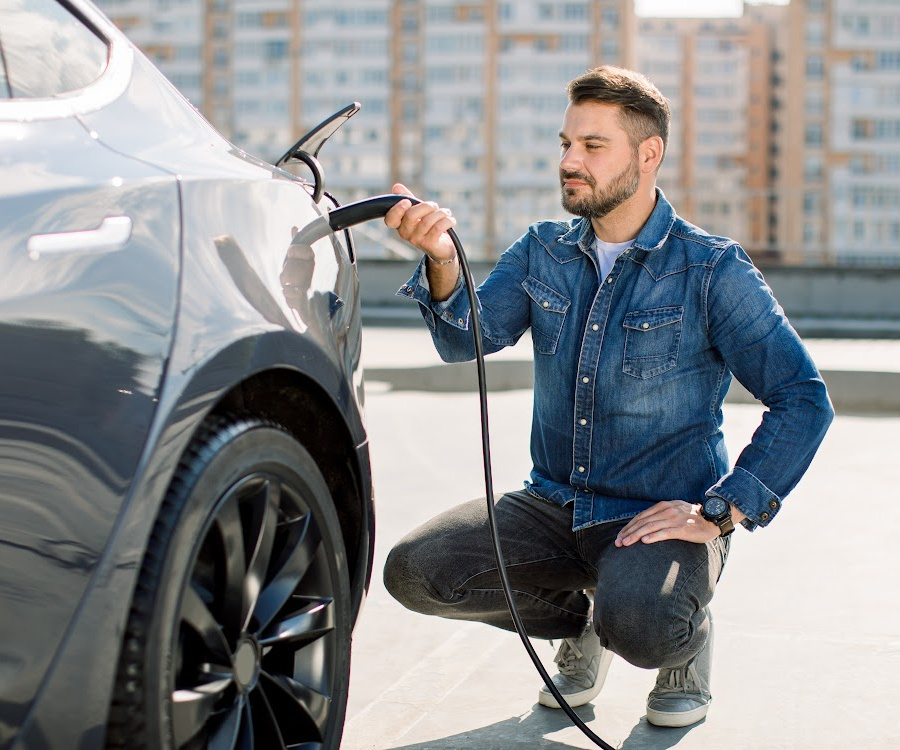That dreaded click-click of a dead battery can put a serious damper on your day (or weekend ride!). If you take some time to learn about battery maintenance, your car or motorcycle battery will be a reliable partner for any drive you’re taking.

We're breaking down the differences between car and motorcycle batteries, exploring how long you can expect yours to last, and most importantly, sharing essential tips to keep it cranking strong for years to come. So, buckle up (or put on your helmet) and get ready to banish dead battery anxiety for good!
What is the difference between car batteries and motorcycle batteries?
Car and motorcycle batteries, while fulfilling the same basic function, are built with distinct purposes in mind. Car batteries pack a bigger punch so they are larger and more robust. They are designed to crank powerful engines and supply ample juice for a car's complex electrical systems – think radios, lights, power windows, and entertainment units. These come in traditional flooded lead-acid versions, requiring occasional maintenance, or newer Absorbent Glass Mat (AGM) designs, which are spill-proof and sealed.

Motorcycle batteries prioritize size and weight efficiency. They're considerably smaller and lighter, tailored to the needs of a motorcycle's more compact engine and simpler electrical system. Similar to car batteries, they come in various types like regular lead-acid models for budget-minded riders, maintenance-free AGM batteries for convenience, and even cutting-edge Lithium-ion options that are incredibly lightweight but come at a premium price. While car batteries focus on raw power, motorcycle batteries prioritize a balance of performance and portability.
How long does a car or motorcycle battery last?
While car batteries boast a lifespan of 3-5 years and motorcycle batteries 2-3 years, these are just averages. The true longevity champion depends on how you treat your battery. Both hot and cold weather take a toll. Steaming summers accelerate the chemical reactions within the battery, shortening its life. Conversely, frigid winters make it harder for the battery to deliver its cranking power.
Your driving habits also play a role. Short, frequent trips barely give the alternator enough time to recharge the battery fully. Similarly, leaving your vehicle unused for extended periods allows the battery to discharge slowly. Both scenarios contribute to a weaker battery.
To maximize battery life, be proactive. Regularly check its health with a multimeter or get it tested at auto parts stores. Early detection of declining performance allows you to replace the battery before it leaves you stranded. Taking these simple steps can significantly extend the lifespan of your car or motorcycle battery.
How can you increase the longevity of a car or motorcycle battery?
You can significantly increase the lifespan of your car or motorcycle battery and avoid unexpected breakdowns by following some recommendations.

Clean and Secure Terminals: Corrosion disrupts the flow of electricity, reducing battery performance and making starting difficult. A clean and secure connection ensures optimal power transfer.
Maintaining Charge: Both car and motorcycle batteries naturally discharge over time. Regular use with sufficient running time allows the alternator to recharge the battery. Trickle chargers for motorcycles during storage prevent deep discharges that can damage the battery.
Avoiding Extremes: Heat accelerates chemical reactions within the battery, leading to faster degradation, and cold temperatures stiffen the battery's internal components, hindering its ability to deliver power. Battery degradation from extreme heat and stiff internal components from extreme cold can shorten battery life.
Fluid Level Monitoring (for non-sealed batteries): Electrolyte solution is crucial for battery function but over time, water evaporates from the solution. Maintaining proper levels ensures efficient internal reactions. Ensure you don’t exceed the maximum level, which should be indicated on the battery, as it can cause overflow and damage.
Minimize Short Trips: Short trips don't give the alternator enough time to fully recharge the battery. If you frequently make short trips, consider combining errands or taking a longer drive occasionally to allow for a proper recharge.
Turn Off Electronics When Not In Use: Leaving interior lights or dome lights on while the engine is off can drain the battery. Develop the habit of turning off all electronics before exiting your vehicle.
Winterize Your Battery: In cold weather, keeping your battery charged is even more important. Consider connecting your car battery to a battery maintainer during extended periods of non-use. Some motorcycle riders also remove the battery and store it indoors during very cold winters.
Tighten Battery Hold-Downs: Over time, battery hold-downs can loosen due to vibrations and a loose battery can bounce around and potentially crack the case, leading to failure. Regularly check and tighten the hold-downs to keep the battery secure.
Are electric car batteries any different than regular car batteries?
Electric vehicle (EV) batteries are a different breed altogether! It can be difficult to pinpoint the exact lifespan of an EV battery since there is still research to be done and data to collect, but estimates currently sit in the 10-20 year range. Unlike their internal combustion counterparts, EV batteries don’t require traditional maintenance tasks like checking fluid levels or cleaning terminals. There are still ways to optimize their lifespan though!

Extreme temperatures can be detrimental to an EV battery, so park in shaded areas whenever possible and avoid leaving your car plugged in on scorching days or frigid nights. While convenient to top off the battery to 100% every time, consistently doing so can stress the battery over time, so it’s a good practice to maximize the daily charge to 80%.
–
Car or motorcycle, understanding your battery and following these simple maintenance tips keeps you in control. No more dead battery surprises, just the open road (or city streets) beckoning your next adventure. So, take charge of your battery's health, ensure reliable starts, and fuel your passion for the ride!
